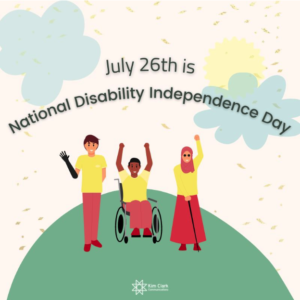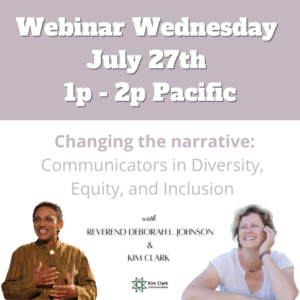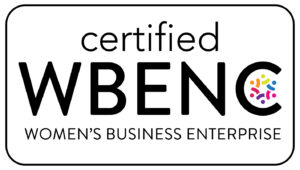A Note from Kim
In my trainings with communicators like you, I often talk about what I call the 3 Cs of cultural moments: Celebrate, Crisis, and Consistency.
Yes, be with us in Celebration. Visibility is awesome. And be with us in Crisis. Recognize and take action on what is impacting the community (legislation, pay, access, opportunities, safety, healthcare, etc.) Then, just be Consistent about it.
I bet you can guess where organizations allocate most of their resources.
Organizations see cultural moments as opportunities. The chance to influence a customer base, share a potent message, and either align on values or capitalize on historically marginalized peoples’ experiences.
But organizations often miss the mark when it comes to a key factor of cultural moments: their success hinges on an understanding of the impacted community. Do you have the urgency to acknowledge why and how communities became and are STILL marginalized? It’s not anything the community did, it’s what was done to them that created marginalization.
What we know is that diversity, equity, and inclusion are outcomes that result from behaviors. And behaviors are influenced by language.
So, as we work to include everyone’s needs and experiences in the development of our work and the decisions we make, habitually communicating inclusively is what will earn the trust, loyalty, and affiliation of our audiences — not the latest viral trend.
See Janet’s video below for some tips and pre-order our book to join us this Thursday, July 28th for a live Zoom conversation about being habitual.
kim
July 26th is National Disability Independence Day in the US. This day commemorates the signing of the Americans with Disabilities Act (ADA) in 1990. The ADA provides protection from employment discrimination, and better access to goods, services, and communications for people with disabilities. A key mantra of the disability movement is, “nothing about us, without us.” Remember this mantra and apply it into your comms process and editorial process.
What to do if your organization is pressured to make a statement in a social justice crisis
Expectations are high for organizations, that have had 2+ years to practice, to speak out in a way that is meaningful and needed in times of social crisis. What do you do if you’re not ready? Janet Stovall shares her guidance.
Taking Notes
- National Disability Independence Day is July 26th. Celebrations like these invite us to lean in and listen to the communities themselves and learn/grow from here.
- Whether because of political differences, stances on social issues, or concerns about environmental impact, a quarter of Americans are boycotting a product or company they had spent money on in the past
- As Conscious Communicators, we need to understand the difference and impact between cultural appropriation and cultural appreciation.
- Janet Stovall joins Bill Banham on the HRChat podcast to consider ways organizations measure diversity and how it can impact perceptions of an employer brand.
Inclusive Communications Tip
An excerpt from our upcoming book, The Conscious Communicator, called “The Joy of Being Seen”
This week, we’re providing a sample of an article that will be in The Conscious Communicator book, written by Chelsea Delaney. He is autistic and is writing to us communicators asking us to be conscientous about tailoring our language after he saw a spot-on ad from a company that makes fidgets:
Many in this community are advocating away from the title of Autism Awareness month towards Autism Acceptance month. The reasoning for this shift goes, “Aren’t we aware enough of autism already?” Thus this company used “Autism Acceptance Month,” in big, bold letters, smack dab in the middle of their visual. They also used identity-first language (autistic person rather than person with autism) three different times in the ad—twice in the copy, and once in the ad itself. Now I was downright giddy.
It would have been easy for them to run with generic and outdated language, and perhaps even evoked less discomfort for people who are not autistic. However, the ad’s word choices not only made autistic people feel seen, but subtly pushed at one of many stereotypes surrounding autism: autistic people as either simpletons or geniuses. Though there are autistic people who need extra help, and those who have extraordinary skills, there are also plenty of them who are neither. Some autistic people just do mundane, everyday tasks like go to work, pay bills, and buy things that they need for their wellness and self-care. I am damn capable of buying my own fidgets, thank you very much.
People commenting on this ad were exuberant with gratitude at being addressed in a way where they felt seen. In fact, I didn’t even see comments about the actual product till thirty or forty comments down in the thread. What’s more, in the weeks to come I saw autistic people reshare this same ad on multiple social media groups for neurodivergent people that I belong to. It’s like we were all at the zoo, gathered gape-mouthed around some exotic animal. The relief and awe at not being re-traumatized in April was palpable. From one small act of compassionate tailoring, this company sustained and increased their visibility and brand loyalty. More importantly, they helped undo a tiny bit of the harm that is so easily done when we’re not paying attention to who’s in front of us.
Upcoming Events
Webinar Wednesday on July 27th 1-2 pm PST:
Live webinar with my teacher and mentor, Rev. Dr. Deborah L. Johnson. We’ll talk about key mistakes we’re making in DEI and how to uplevel our communications so that we take the opportunity that pain has been pushing so we can get pulled by vision. Register in advance for this meeting. After registering, you will receive a confirmation email containing information about joining the meeting.
Save the date: LinkedIn Live on August 24th 9-10 am PST
Hosted by Staffbase, Kim will be talking about the relationship between inclusive language and employee mental health and wellness. Stay tuned for more details!
Save the date: Free Webinar on August 24th 2:30-3:30 pm PST
The practice of DEI: Kim will be partnering with a DEI practitioner focused on strategy and assessment to offer the marketing and communications lens to the practice of DEI. Stay tuned for more details!
Book 15 Minutes with Kim to talk about your DEI Communications challenges
Pre-Order The Conscious Communicator:
The fine art of not saying stupid sh*t.
As you know, we are teaming up to co-author a book called The Conscious Communicator: The fine art of not saying stupid sh*t. It’s now available for pre-order.
It’s a guide for organizational communicators to help their communications have more DEPTH to avoid being performative and generating employee and social media backlash. DEPTH is a 5-step model to ensure messaging and content are meaningfully and intentionally created through a diversity, equity, and inclusion (DEI) lens.
We bundle your pre-order of our book with a free live Zoom session with us on the last Thursday of each month.
Follow Kim on Social
Follow Janet on Social
Share This Week’s Blog Post to Your Socials
How to Subscribe
Fill out the form below to receive The Conscious Communicator’s Weekly Newsletter to your inbox!



